Selfie drones that soared in 2017

Since 2015, the selfie drone has been a kind of "Holy Grail" gadzhemanov. Many startups promised something similar and failed, despite consumer interest and successful crowdfunding. Lily Drone, Onagofly and Zano will never fly. Some have disappeared on the Internet, like Roam-E. However, the latter had very dubious aerodynamic properties.
This means one thing: it is not so easy to develop a mini quadcopter suitable for mass users and mass production. To a radio amateur who collects his own drones, the problem may seem to have been sucked out of his finger, but the facts show that small Western companies have not coped with the implementation of this idea.
Now major Chinese manufacturers have entered the arena, and at last it has become interesting.
The knight managed to make the most important player, the Chinese corporation DJI. On May 24, she released the Spark mini selfie drone, and we already managed to compare it with the folding quadcopter Mavic, another DJI product.

DJI Spark
But Spark and Mavic are still in different "weight" and price categories. It is more logical to check how the new drone smacks with opponents of similar size, characteristics and cost. Therefore, today compare the following quadrocopters: DJI Spark, Yuneec Breeze, Hover Camera Passport and Zerotech Dobby.
Dimensions
Dimensions are one of the decisive characteristics for a selfie drone. The same Lily Drone had a rather large body, which could certainly have been a problem if the quadcopter had been launched into production.
Large drones cope better with the wind, high-quality cameras cling to them, but who wants to constantly carry a suitcase with a drone and accessories for it on its back? Compact cameras and camcorders did not survive the competition with cameras on phones - and drones are moving in the same direction.
It is worth noting that Dobby and Hover Camera drones are folded together, while Spark removes and folds propellers. In Breeze, the propellers are also added, but not removed. Because of this variety of designs, comparing them is a bit difficult.
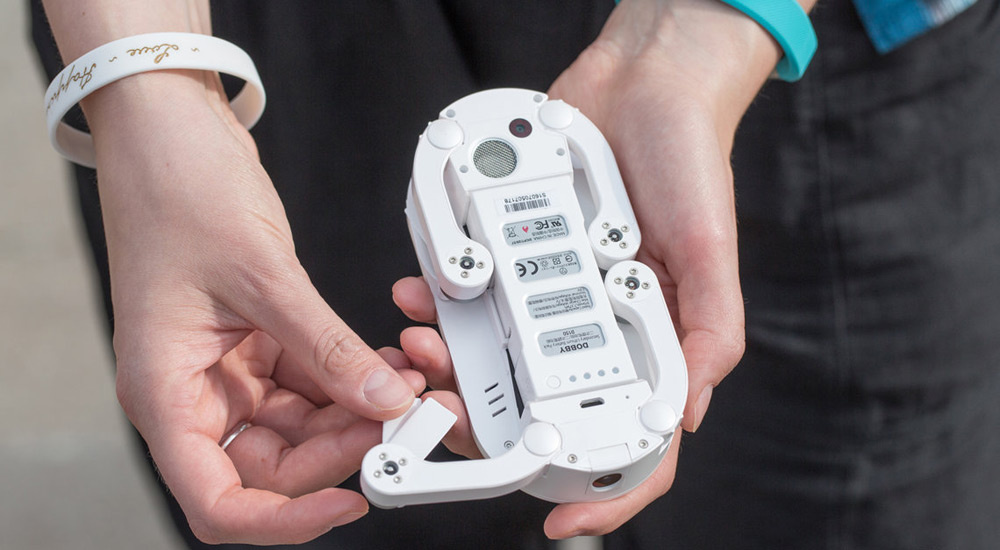
Zerotech dobby
However, the most compact is Dobby, which in the folded and in working condition occupies the least space. The second place is occupied by Spark, which is only slightly larger. Both drone easily placed on the palm of an adult.
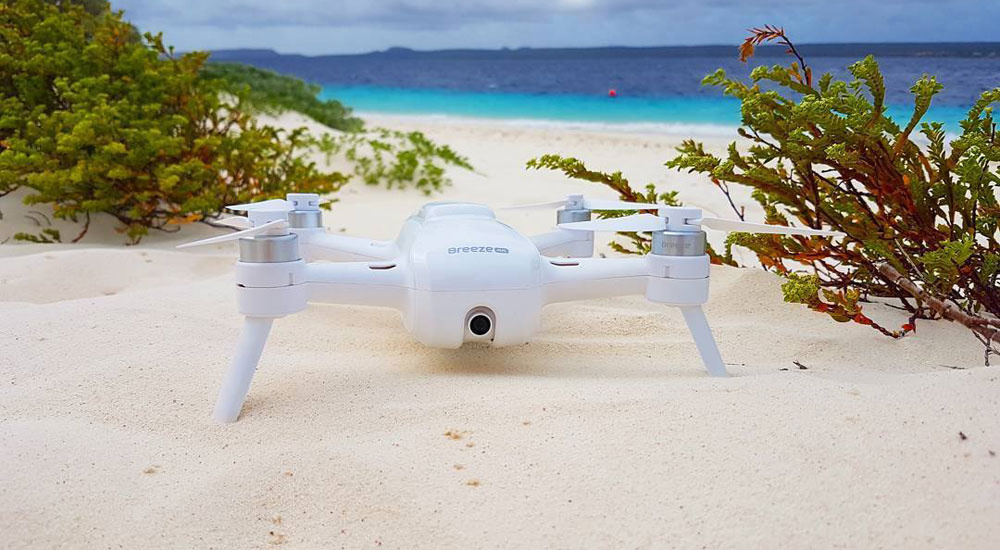
Yuneec breeze
Breeze is definitely bigger and heavier than all competitors: it weighs 385 grams. Folded Hover Camera in appearance and size resembles a VHS-cassette, and in the unfolded becomes twice the area.
Dobby's weight is only 199 grams. When the drone's rays and propellers go inside, it resembles a plastic soap dish. Since nothing sticks out from the outside, it's not scary to put a gadget in your pocket or bag. The device will not tolerate too rough handling: we have seen it the hard way.
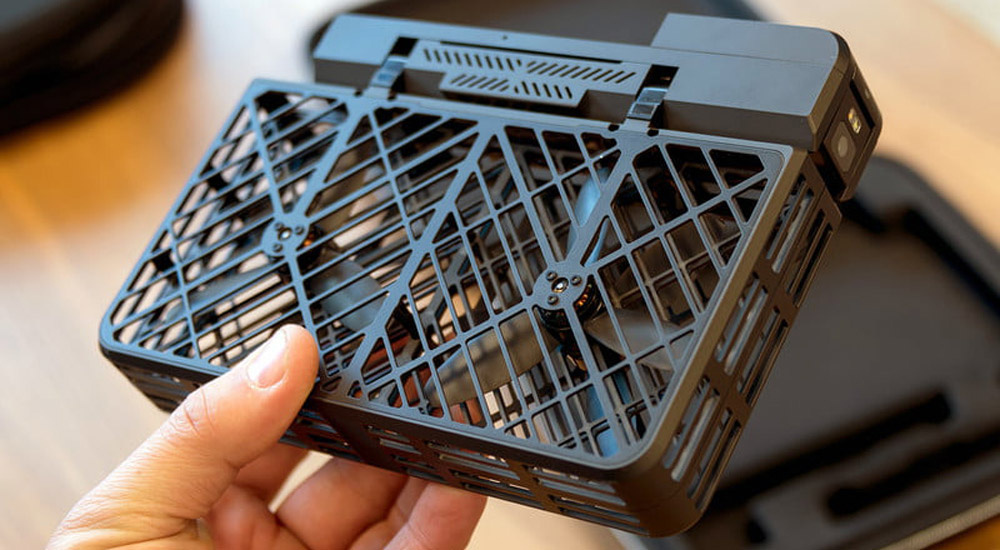
Hover Camera Passport
Hover Camera on convenience in second place. It is easy to carry, and the rectangular drone frame made of carbon fiber protects the propellers from the person, and the person from the propellers. He calmly experiences falling from a small height.
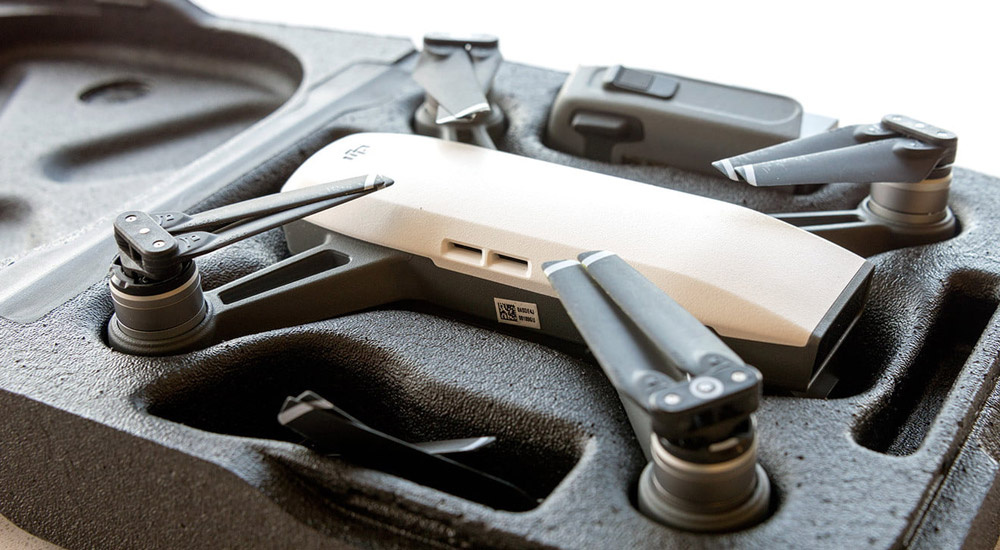
DJI Spark
Included with the Spark is a carrying case, so it is not supposed to throw the drone into the bag. It is made of durable plastic and will make some measure of rough handling, but without unhealthy enthusiasm.
Breeze is stored in its own case, like Spark, but larger. In the pocket of this drone does not fit in any way.

Flight
Immediately I will say the obvious: of all four mini-quadcopters, the Hover Camera is the worst flying. In many ways, this is due to the unsuccessful aerodynamic form: the drone is like a brick and flies almost the same. The gusty and strong wind of the copter is contraindicated. This does not mean that in the room he moves without problems. On the contrary, in the hands of an inexperienced user, the drone recounts all the walls, but the “cell” will safely save him from damage.
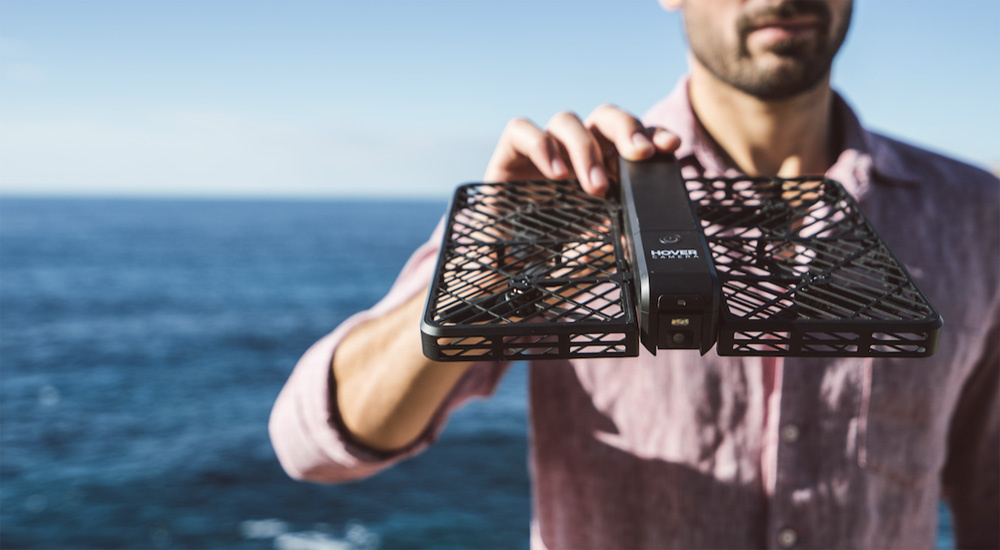
Hover Camera Passport
Little Dobby is extremely peculiar. Since it is lightweight, it “storms” in the wind, but, in general, it is pleasant to control it. Indoors, it faces the same problem as the Hover Camera.
Breeze is also not intended to fly under the roof, but on the street it shows itself from the best side. Weight gives him an advantage, the drone confidently opposes the air element. On the other hand, it is the slowest drone of the four, which only accelerates to 18 kilometers per hour.
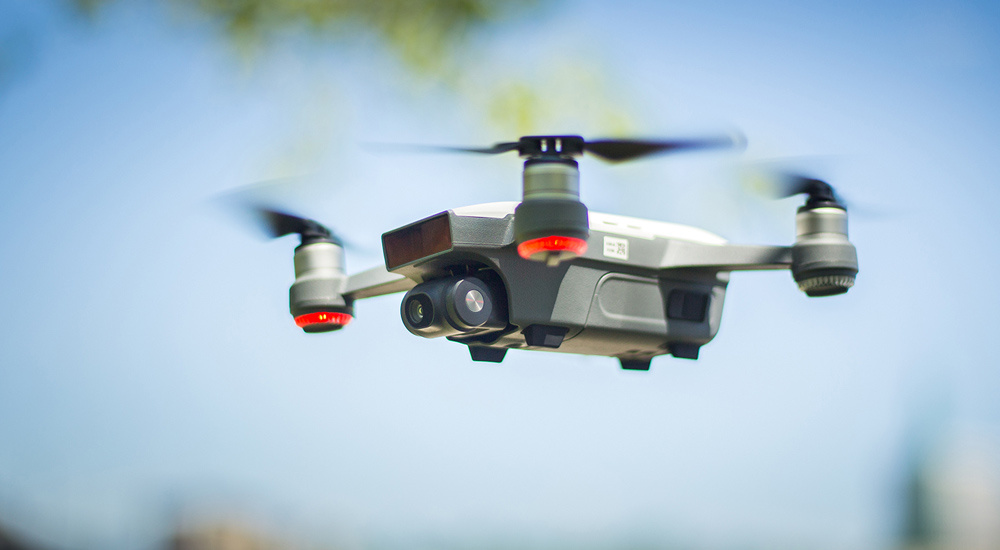
DJI Spark
Spark flies almost as good as his older brother, Mavic Pro. Yes, due to the lower weight, it significantly fights the strong wind. The quality of the shooting “struggle” almost does not affect because of the combination of digital and physical stabilization.
Spark has another trump card - its controller. All four drons are controlled via Wi-Fi smartphones, because of this limitation, their ranges and speeds almost coincide.
However, it is necessary to connect its remote to the Spark, and the drone literally flies into space: a sport mode becomes available, high speed and a range of 2 kilometers (at your own risk). Breeze also has a remote control and even FPV glasses, but they do not affect the flight data of the quadcopter.
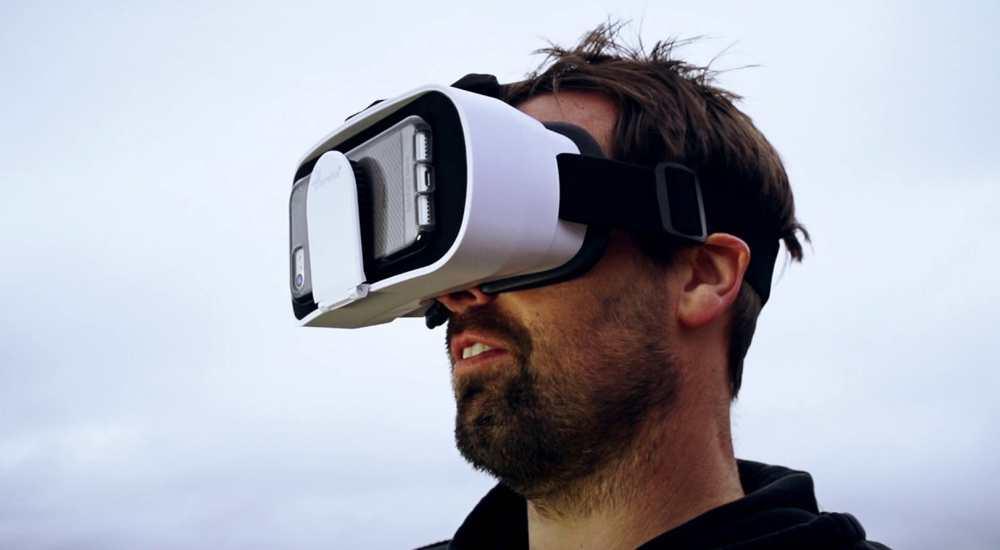
Breeze FPV Points
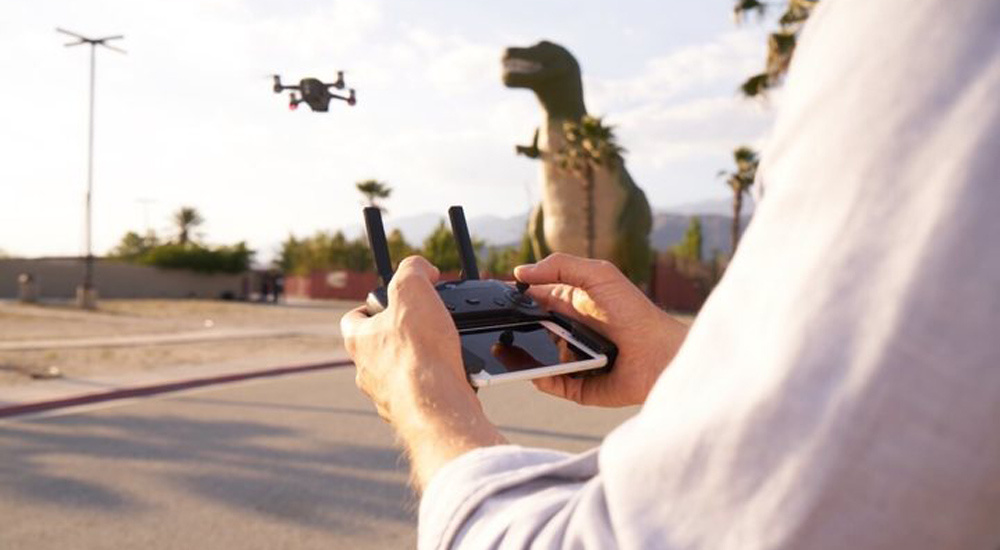
Controller for Spark
All four drones can recognize faces and take selfies, as well as autonomously follow a subject and fly around it. Hover Camera and Spark support gesture management. The first drone understands only two gestures - “horns” give the command to take a selfie, and the OK sign causes the device to stop following the owner.
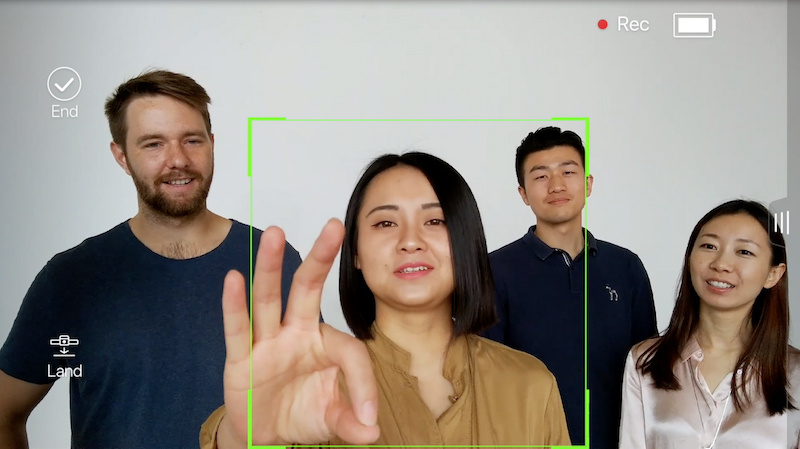
Hover camera
Spark's “dictionary” is much more extensive. With one hand, the quadrocopter can be ordered to fly away, fly closer, take a photo, and then it will land on an open palm. You do not need to get the smartphone, just turn on the device.
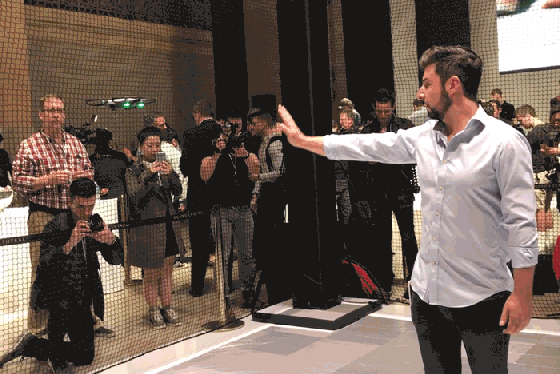
DJI Spark
And the DJI mini quadcopter does what many “serious” UAVs are not able to: it autonomously avoids collisions with obstacles. The system is directed only forward and operates at a distance of 0.2–5 meters.

Shooting quality
Mini quadcopters with cameras existed before. The same Syma and Hubsan made a lot of budget devices that can take photos and videos. The quality and resolution leave much to be desired, especially now, when even budget smartphones can boast good cameras.
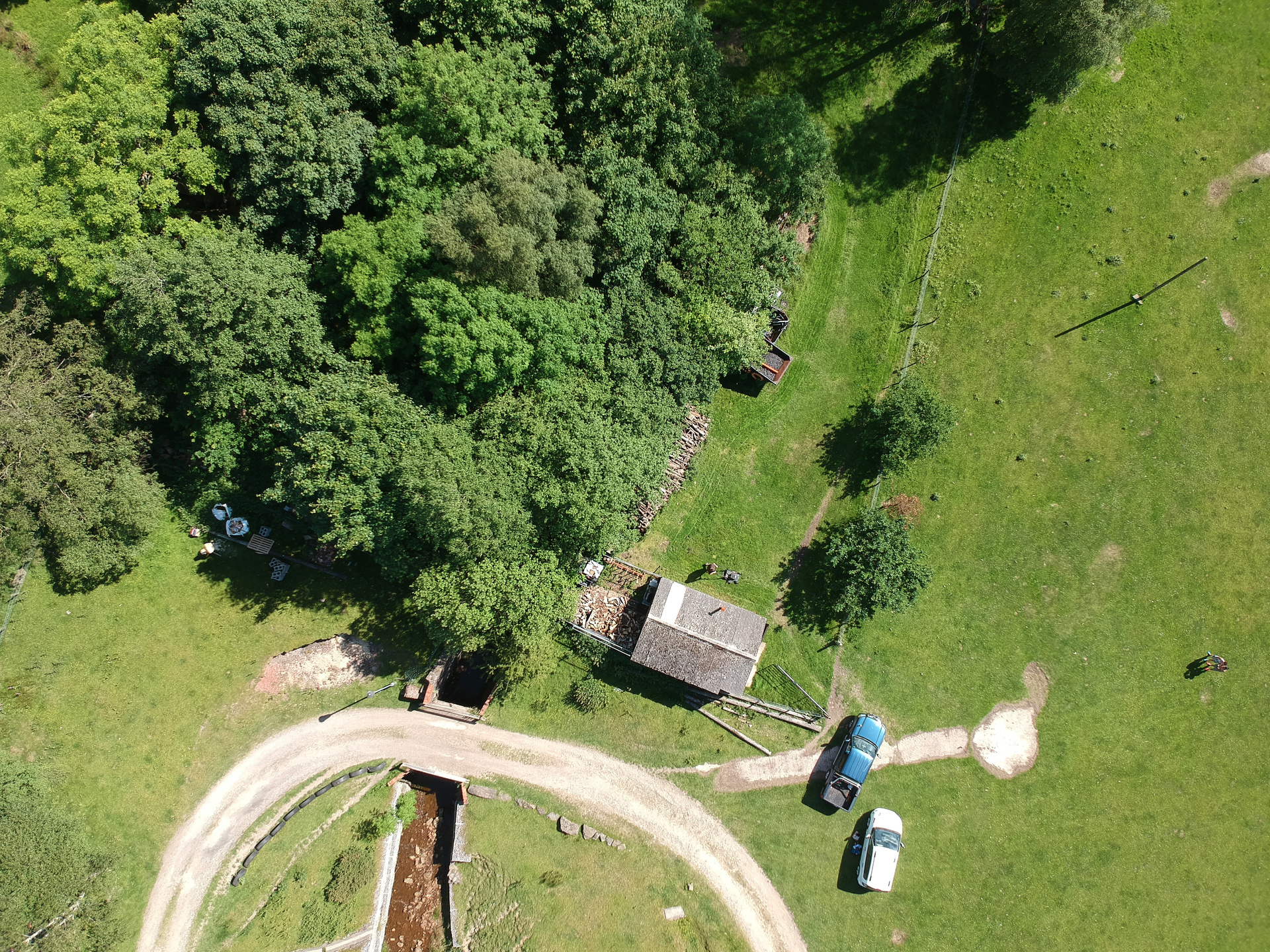
Photo taken by DJI Spark. Posted by: Richard Easton
All four heroes of this article shoot video in 4K, but in fact it is necessary for digital stabilization, which “eats” part of the resolution. Spark, in addition to the EIS, also has a mechanical two-axis hanger. At the same time, the DJI drone is limited in resolution: only one is available, 1080p / 30 frames per second. The highest frame rate gives Breeze - 60 frames per second when shooting at 720p.
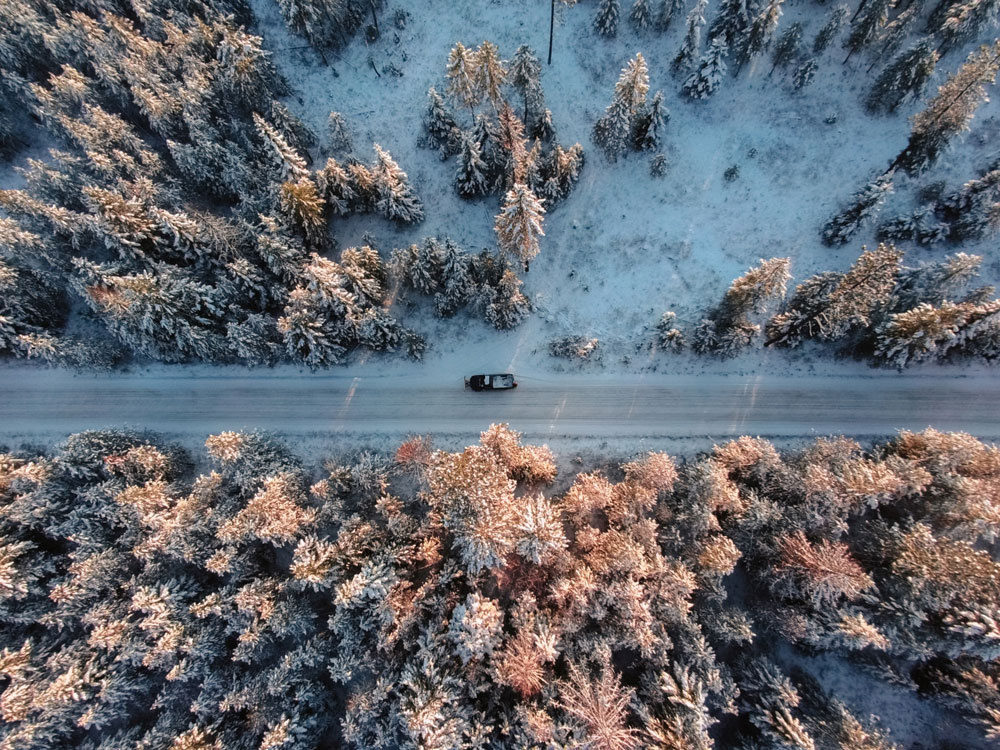
Photo taken by Yuneec Breeze. Posted by: Justin Mullet
The parameters of the drone cameras are very similar, but the results differ dramatically. The best quality shots are made by Spark, Breeze is not far behind him, then follow Hover Camera and Dobby. Without video stabilization from the last two looks unimportant, and the quality of photos strongly depends on the light. If it’s bad, you’ll have a black cat’s selfie in a dark room.
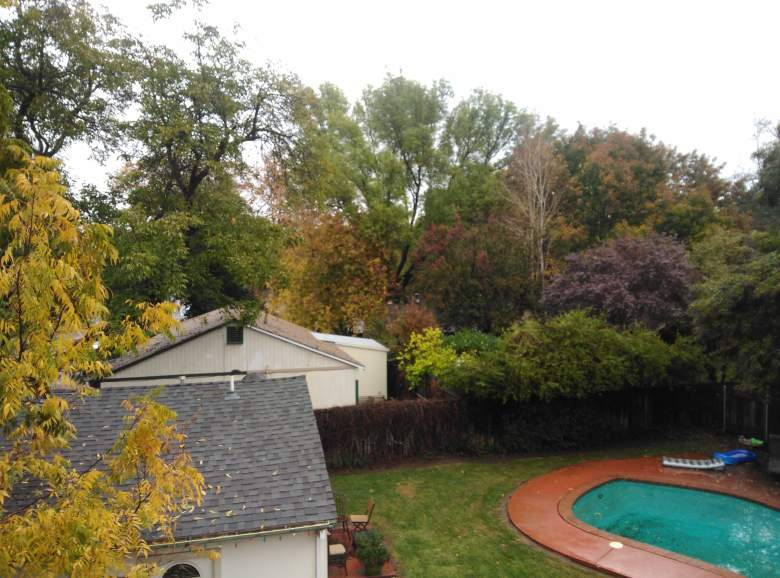
Photo taken by Hover Camera. Posted by: Jackie Peterson
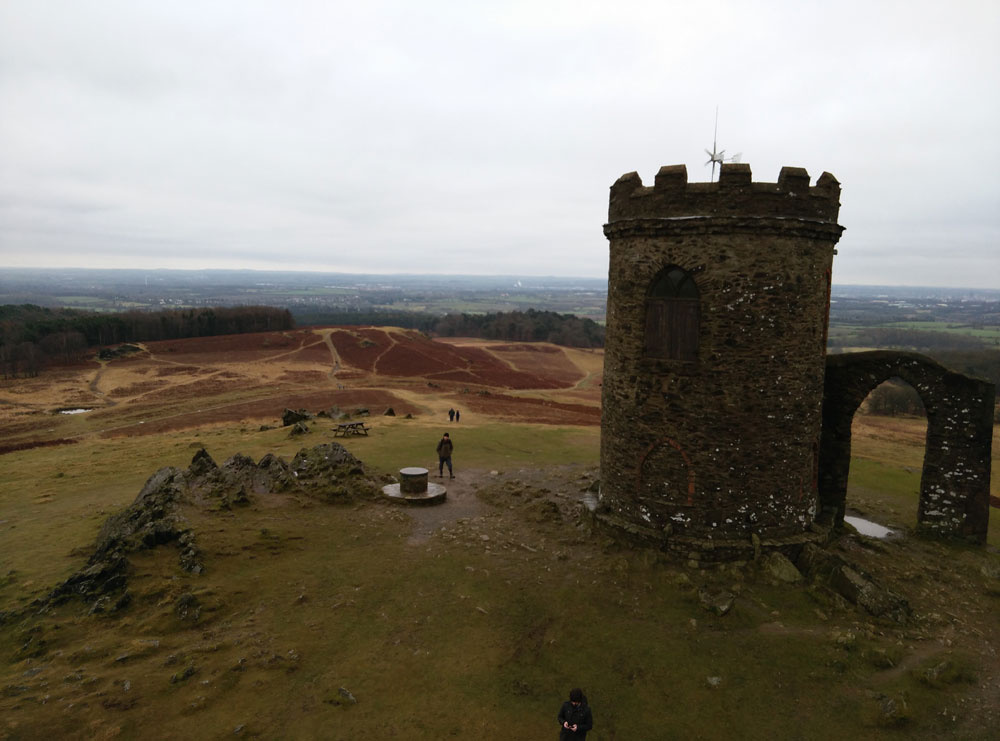
Photo taken by Zerotech Dobby. By: Damien McFerran
If you use these gadgets for their intended purpose, that is, for selfies, especially there is nothing to complain about. All of them take photos and videos, in which it is easy to distinguish the content face of the owner. However, we live in the world of the iPhone Photography Awards, where an impressive smartphone is enough to shoot. Therefore, the satisfactory quality of the camera will appeal to not everyone.
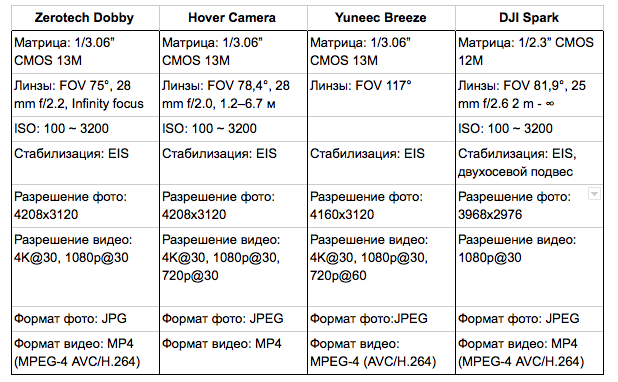
Memory and maps
An important question: where do self-drones record photos and videos? In a dystopic future, the answer would be a cloud where corporations have instant access to all of your personal information. In a disappointing present, gadgets continue to store some of the information locally.
Dobby, Hover and Breeze are equipped with built-in memory: 16, 32 and 16 gigabytes, respectively. That's all, since all three quadrocopters do not support external cards.
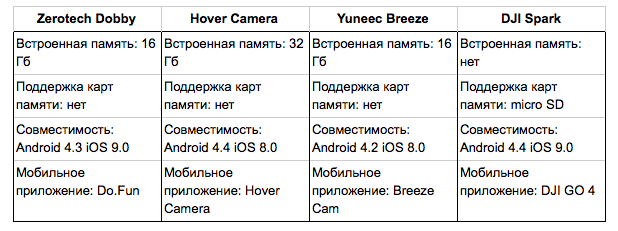
Spark is the mirror opposite, as it has no internal memory accessible to the user, but it reads external maps. Supports work with micro SD cards (SDHC, SDXC) of the UHS-I standard. Capacity - from 16 to 64 gigabytes.
Work with photos and video is carried out through applications with which you can share your selfie on social networks.
Batteries
The operating time of almost all modern consumer drones leaves much to be desired. Hope is served unless the latest development DJI, able to hold out in the air for half an hour, and the winged Parrot Disco, flying the whole 45 minutes.

Hover camera
Selfie drones usually fly ten to fifteen minutes. Unfortunately, almost all of the "magnificent four" does not go beyond these figures. Spark batteries last for 16 minutes of flight, which is slightly better than ten. Baby Dobby flies just 9 minutes (more than enough to break it).
This distressing disadvantage is compensated by additional batteries sold separately. The most expensive battery is the Breeze ($ 59.99), the cheapest is the Hover ($ 44.99).

However, by simple calculations, it turns out that each minute of extra time is the least expensive for DJI Spark, and the Dobby battery is, in fact, very expensive. Plus, Breeze and Hover have a very awkward mobile app interface, navigation in which eats up precious time.
Finally it is worth adding that Spark also charges via USB-port: slowly but surely. The competitors do not have such a function, it is hoped that it will become standard for selfie drones of the future.
Cost and accessories
The most important question is the question of price. When Zerotech Dobby just went on sale, it cost $ 399, but now you can find a better offer - $ 349 (in the US). The average price on AliExpress is $ 369. The kit includes the quadcopter itself, one battery for it, a charger and a USB-C cable.

Zerotech dobby
Initially, the developers of Hover Camera Passport asked $ 599 for a novelty. Right now in the American Apple Store drone is already sold for $ 499.95. On AliExpress, a drone without delivery costs about $ 670, and on Amazon - already $ 799. In Russia, the device can be purchased for a price of $ 820. The kit includes a drone, two batteries, charging and adapter.

Hover Camera Passport
Yuneec Breeze 4K managed to fall in price from $ 499 to $ 375 on the American Amazon. The Russians, who decided to save with AliExpress, will find to their displeasure that the average price there will be $ 495 without delivery. The average price in Russia is 30,000 rubles, by as much as 500 rubles more. The kit consists of a drone, a battery, a case for it, a charger, spare propellers, protection for propellers and a USB cable. You can buy a drone for 30,000 rubles in the Madrobots online store .
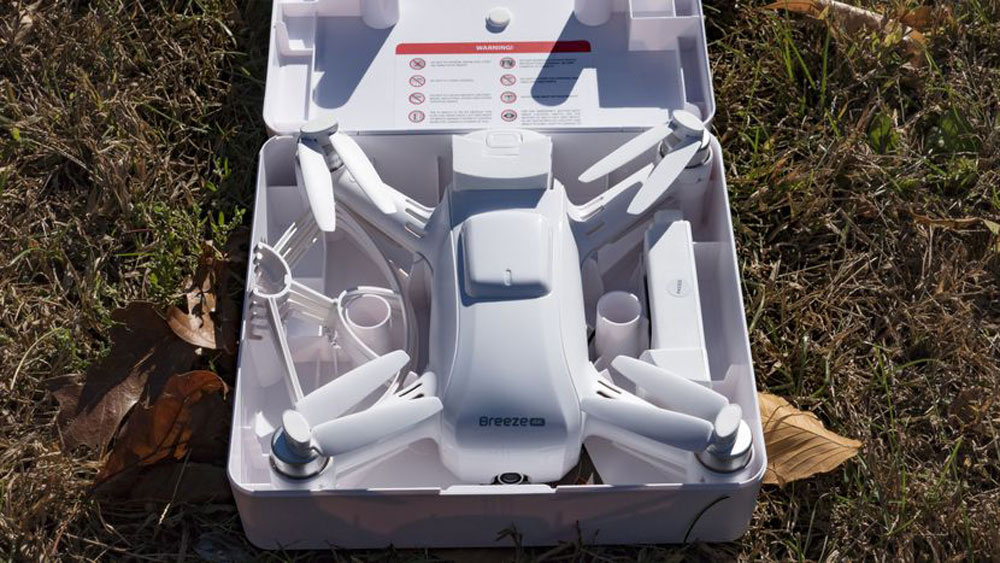
Yuneec breeze
The official DJI Spark drone site on sale for $ 499 - but this is for the United States. For Europe, the rates are already $ 599 (and £ 519), which is why in Russia it is in the same range: 40,000–50,000 rubles. For this amount you get: drone, propellers to it, battery, micro USB cable, adapter and case. In Madrobots open pre-order for a new product that will appear within a month.
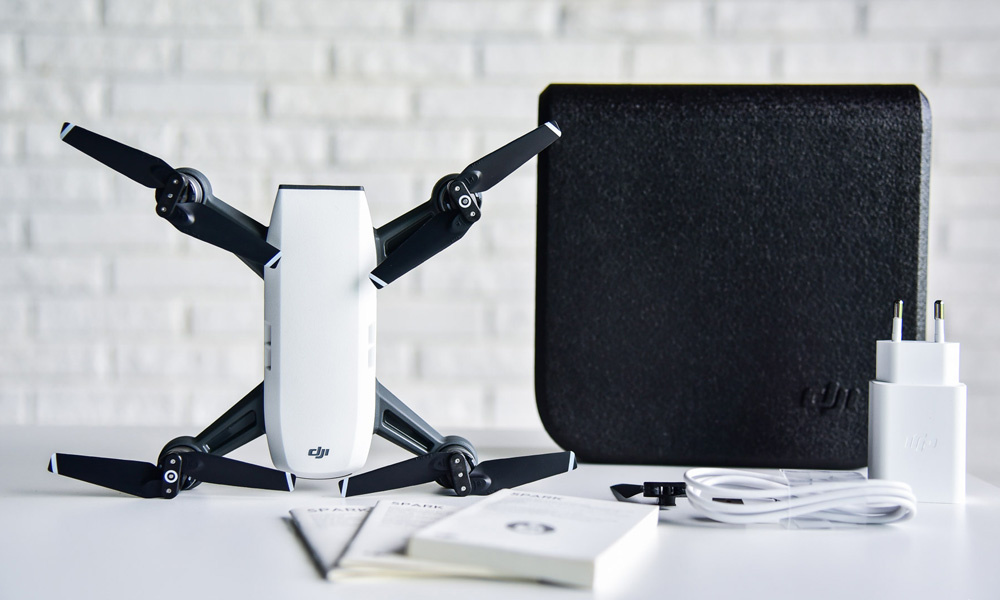
DJI Spark
Accessories for Dobby and Hover Camera do not represent anything particularly interesting: it is protection and batteries for the first and batteries, case, bolts and propellers for the second.
For Breeze there is a separate set of FPV-glasses and a controller. It costs from 70 (Amazon) to 117 (in Russia) dollars, and significantly improves the usability of a small UAV.
The most attractive option is Spark. This is the above-mentioned controller, you can buy it separately (€ 179, $ 149), or as part of an enhanced DJI Spark Fly More Combo set . In the latter case, along with the drone, the future pilot receives a controller, two batteries, a double set of propellers, protection for them, a charging hub, a micro USB cable, a storage case and a bag for transportation.


All Articles